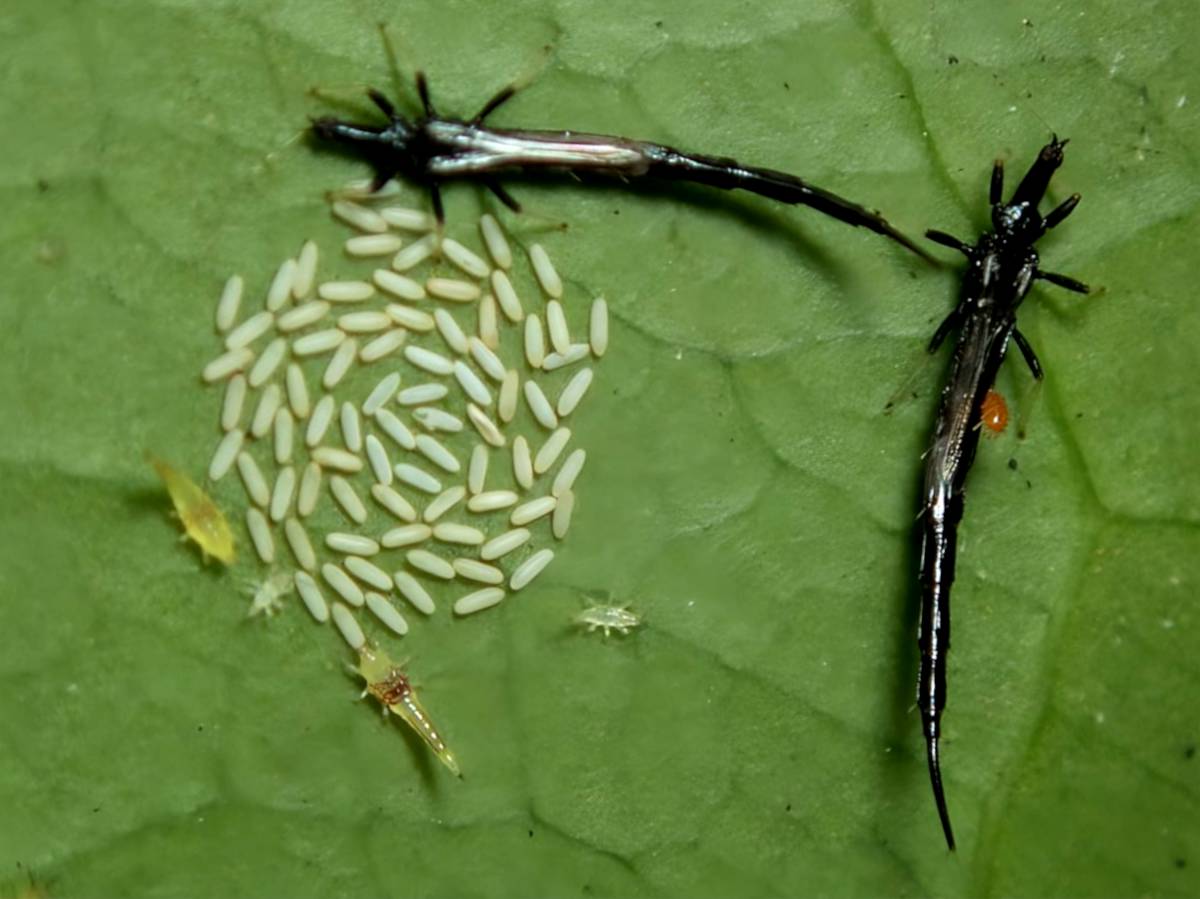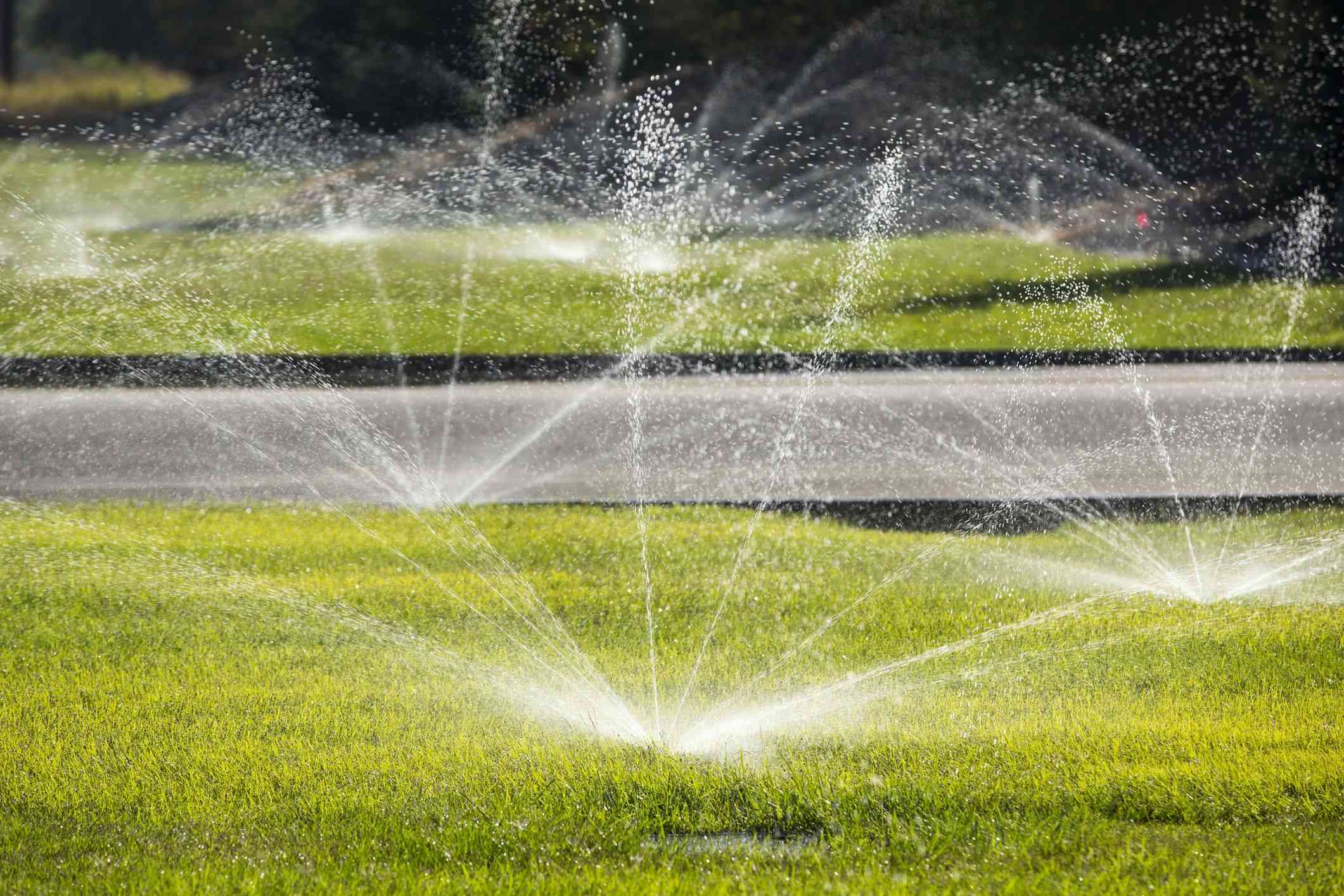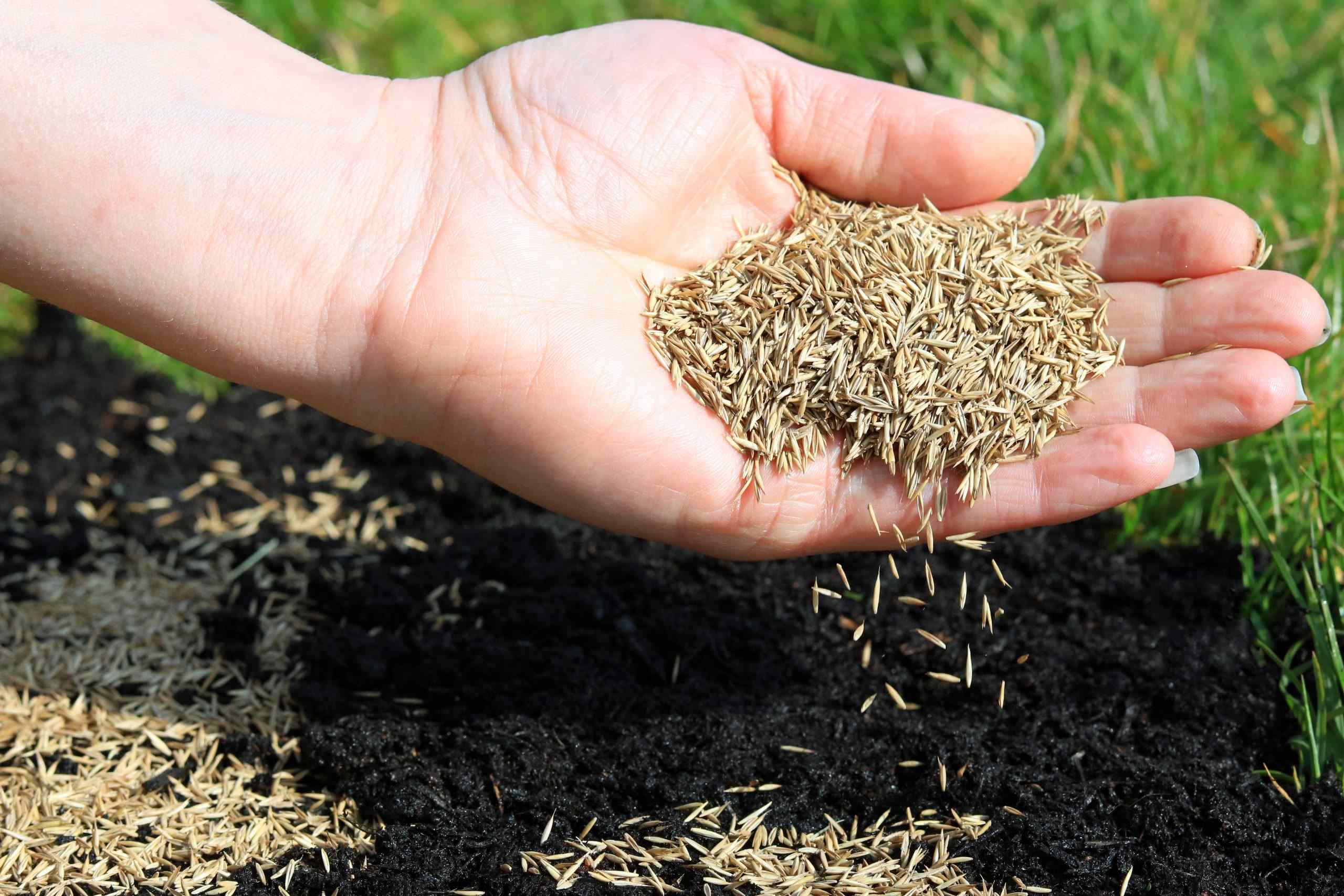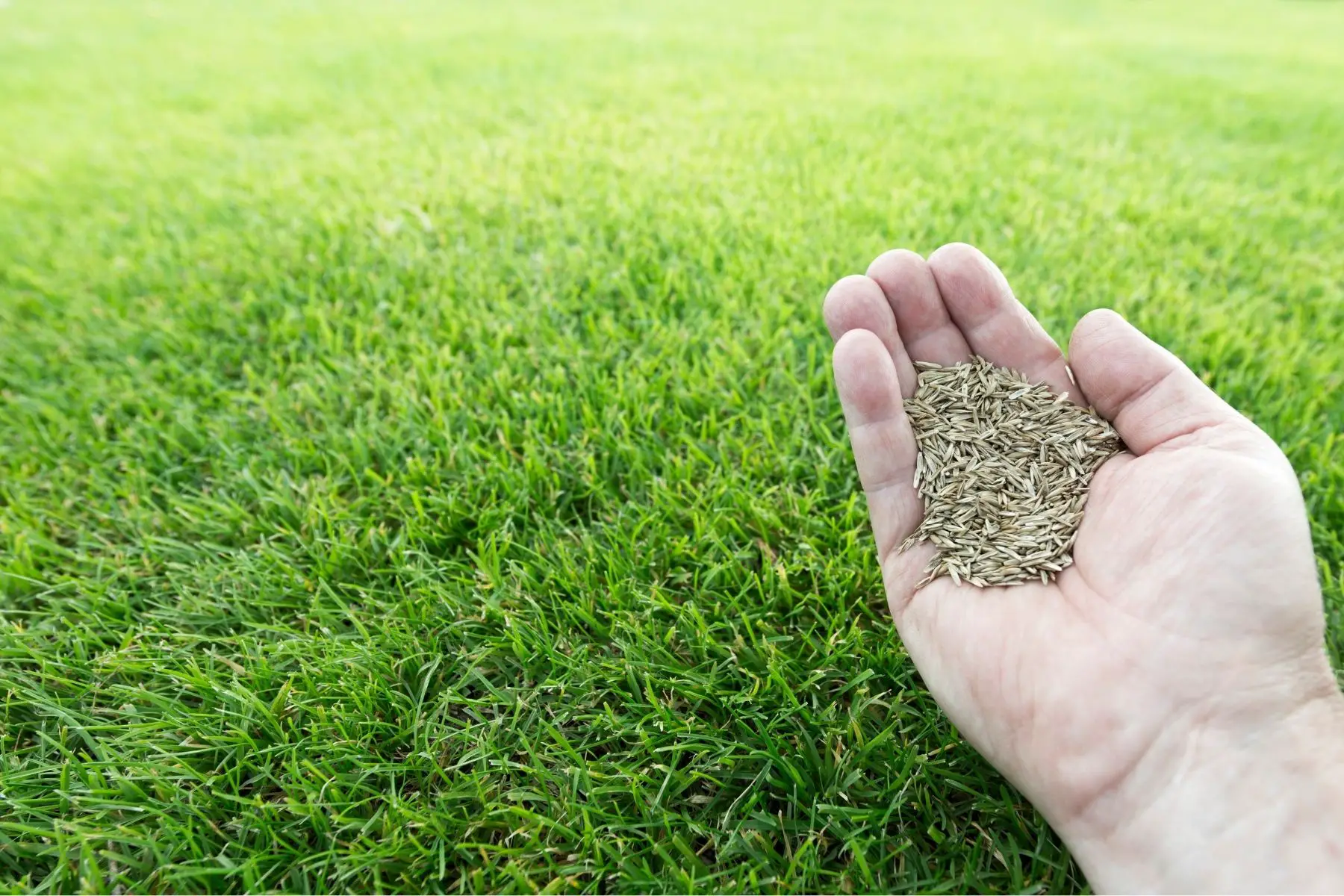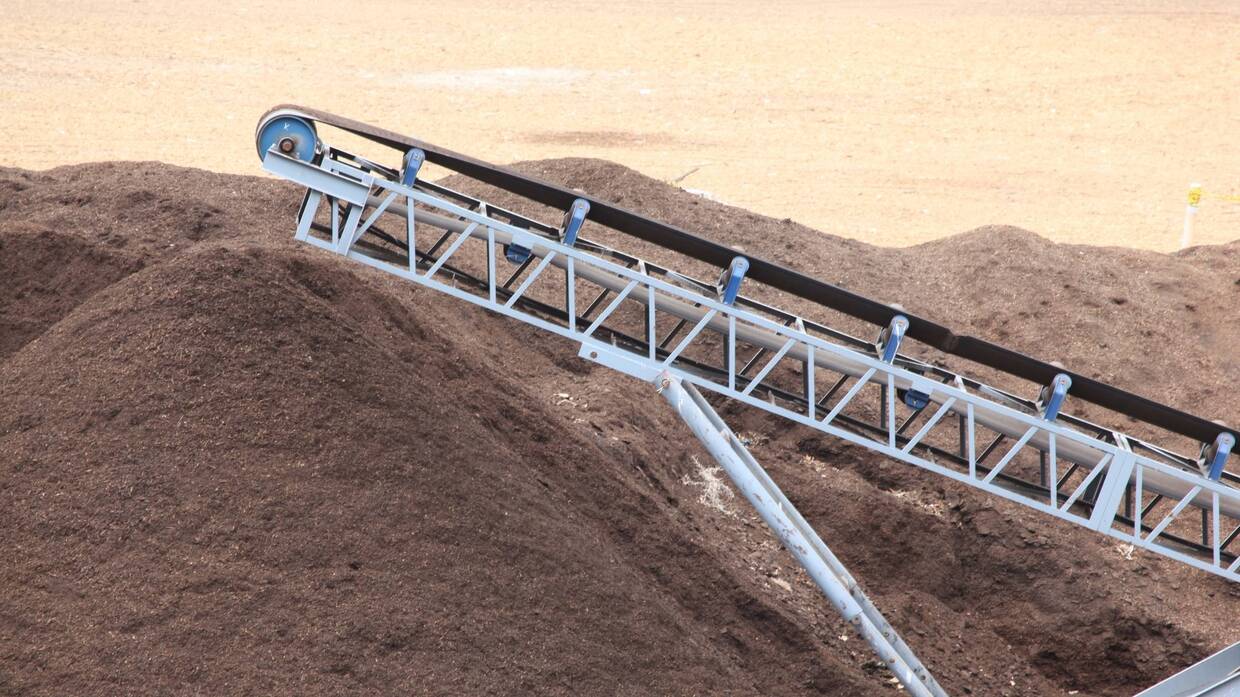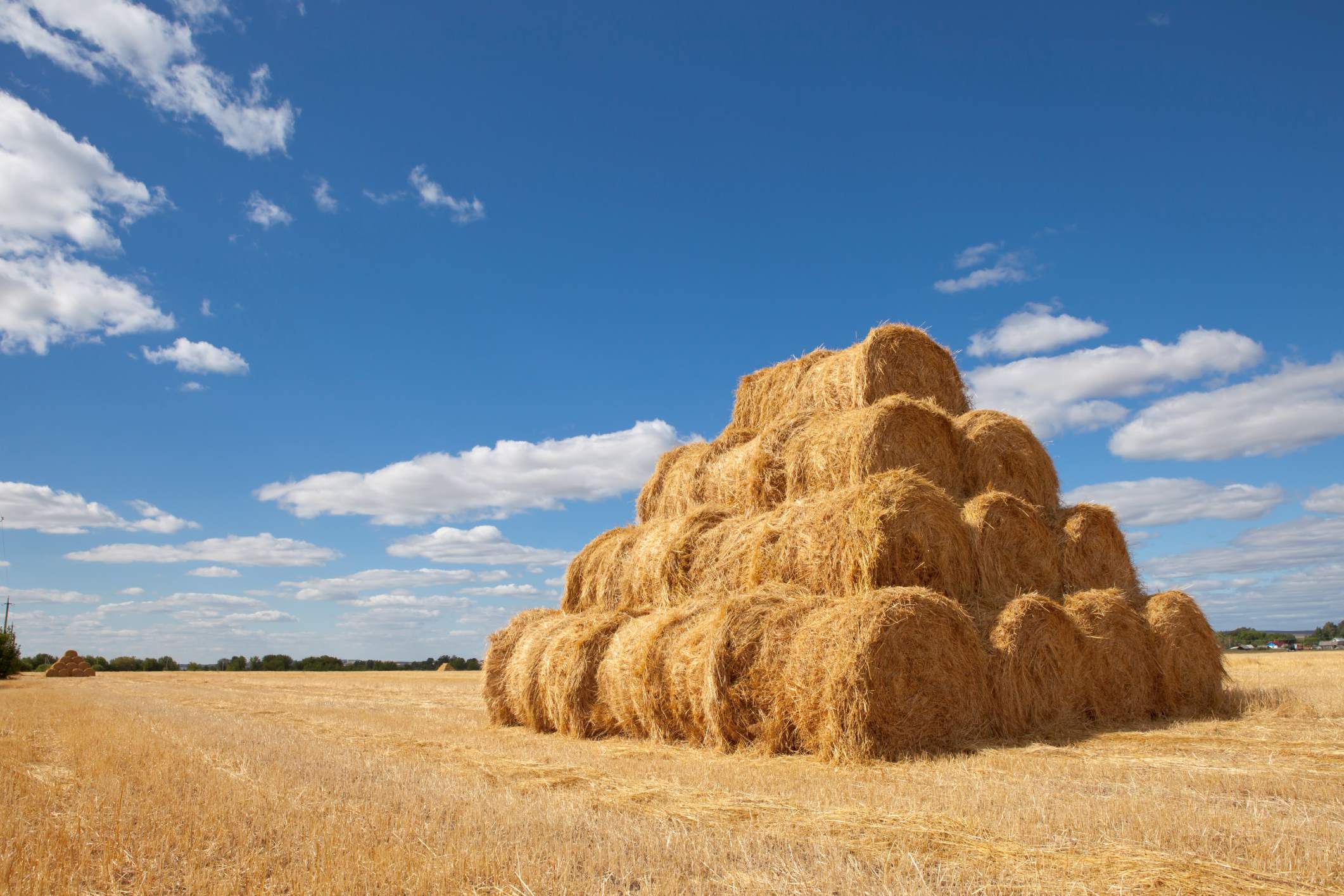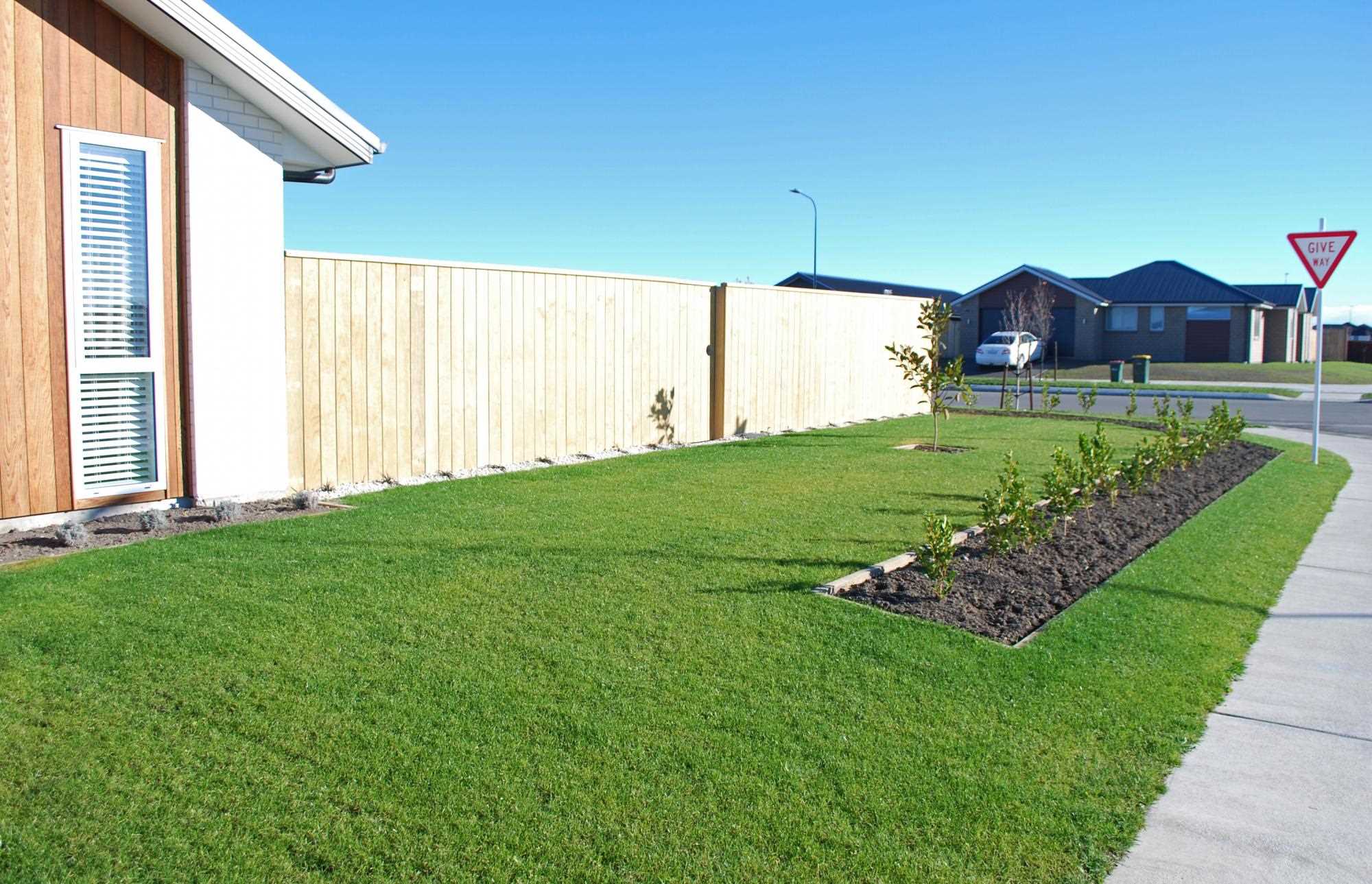Home>Gardening Basics>Understanding Soil>How To Lay Topsoil And Grass Seed


Understanding Soil
How To Lay Topsoil And Grass Seed
Published: November 21, 2023
Learn how to lay topsoil and grass seed to create a lush and healthy lawn. Gain a comprehensive understanding of soil and its importance for successful landscaping.
(Many of the links in this article redirect to a specific reviewed product. Your purchase of these products through affiliate links helps to generate commission for Chicagolandgardening.com, at no extra cost. Learn more)
Table of Contents
Introduction
Welcome to the world of soil and the secrets it holds beneath our feet. Understanding soil is crucial when it comes to creating healthy and beautiful gardens, lawns, and landscapes. As an SEO expert with a deep knowledge of soil, I will guide you through the process of laying topsoil and grass seed, ensuring that your new lawn thrives with proper care and attention.
When it comes to landscaping, a strong foundation is essential. The first step in creating a lush and vibrant lawn is preparing the soil. By improving its quality and providing the necessary nutrients, you can create an optimal environment for your grass seed to flourish.
Once the soil is prepared, it’s time to distribute the topsoil evenly. Topsoil is the uppermost layer of soil and contains the highest concentration of organic matter and essential nutrients. By spreading topsoil, you can improve the soil structure and provide a fertile bed for your grass seed.
After spreading the topsoil, it’s important to level the surface. This ensures an even distribution of the topsoil layer, minimizes water pooling, and provides a smooth surface for planting the grass seed. Choosing the right type of grass seed for your area is also crucial for a successful lawn. Factors such as climate, soil type, sun exposure, and desired appearance all play a role in determining the ideal grass seed for your lawn.
Once the grass seed is selected, it’s time to sow it over the prepared topsoil. Properly spreading the grass seed ensures uniform coverage, leading to an even and dense growth of grass. Watering the newly seeded area is vital to initiate germination and provide ample hydration for the developing seedlings.
With the right maintenance and care, your new lawn will thrive and provide a lush and beautiful outdoor space. Regular watering, mowing, fertilizing, and aeration are vital for the long-term health of your lawn.
So, are you ready to embark on the journey of laying topsoil and grass seed? Let’s dive in and discover the secrets to creating a vibrant and healthy lawn that will be the envy of the neighborhood!
Step 1: Prepare the Soil
The first step in laying topsoil and grass seed is to properly prepare the soil. This crucial step sets the foundation for a healthy and thriving lawn. Here are the key steps to follow:
- Start by removing any existing vegetation, such as weeds or old grass, from the area where you plan to lay the topsoil. This can be done through manually pulling the weeds or by using a weed killer.
- Next, use a garden tiller or a shovel to loosen the soil. This will help break up compacted soil and improve drainage. It’s important to till the soil to a depth of at least 6 inches, ensuring the roots of the grass will have room to grow.
- Once the soil is loosened, remove any rocks, debris, or large clumps of soil. This will create a smooth and even surface for the topsoil and grass seed.
- It’s now time to improve the soil’s quality by adding organic matter. This can be done by incorporating compost or well-rotted manure into the soil. Organic matter helps improve soil structure, retains moisture, and provides essential nutrients for the grass seed.
- After incorporating organic matter, use a rake to level the soil surface. This will ensure an even distribution of the added organic matter and create a smooth base for the topsoil.
Properly preparing the soil is crucial for establishing a strong and healthy lawn. It helps create an optimal environment for the grass seed to take root, promotes drainage, and ensures the availability of essential nutrients. Take the time to properly prepare the soil, as it will greatly contribute to the success of your lawn in the long run.
Step 2: Spread Topsoil
Now that the soil is prepared, the next step is to spread the topsoil. This layer of nutrient-rich soil will provide a fertile bed for the grass seed to grow. Follow these steps to properly spread topsoil:
- Start by calculating the amount of topsoil you will need. Measure the length and width of the area and multiply the two values to determine the square footage. Consult with a professional or a local garden center to determine the recommended depth of topsoil for your specific lawn needs.
- Obtain the required amount of topsoil from a reliable supplier. Look for high-quality topsoil that is free from contaminants and rich in organic matter and essential nutrients.
- Use a garden rake or shovel to distribute the topsoil in an even layer over the prepared soil. Start from one end of the area and work your way towards the other end, ensuring uniform coverage.
- Aim to achieve a consistent depth of topsoil across the entire area. This can be done by using a gardening rake to level the topsoil as you spread it.
- Pay attention to any existing slopes or uneven areas. Adjust the thickness of the topsoil accordingly to achieve a level surface.
- As you spread the topsoil, avoid compacting it by stepping on it. This can lead to poor soil structure and hinder the growth of the grass seed.
By properly spreading topsoil, you create a nutrient-rich foundation for your lawn. The topsoil layer provides a conducive environment for the grass seed to germinate and develop strong roots. Additionally, it helps improve water retention and promotes healthy soil structure. Taking the time to evenly distribute the topsoil will result in a more uniform and lush lawn.
Step 3: Level the Topsoil
After spreading the topsoil, it’s time to level the surface. This step is crucial as it ensures an even distribution of the topsoil layer and creates a smooth surface for planting the grass seed. Follow these steps to properly level the topsoil:
- Start by using a garden rake to spread the topsoil evenly across the area. This will help fill in any low spots and create a more consistent surface.
- As you rake the topsoil, pay attention to any bumps or mounds. Rake excess soil from high areas into lower spots to achieve a level surface.
- Continue raking the topsoil until you have achieved an even layer. Take your time and frequently step back to assess the surface for any uneven areas.
- If necessary, use a leveling tool, such as a lawn roller or a straight piece of lumber, to further smooth out the topsoil. Roll the tool over the surface in a back-and-forth motion to level out any remaining irregularities.
- During the leveling process, be mindful of the overall slope of the lawn. Ensure that water will properly drain off the surface to prevent pooling or waterlogged areas.
Leveling the topsoil provides several benefits for your lawn. By creating an even surface, it ensures uniform coverage of the grass seed and promotes consistent growth. A level lawn also helps prevent water runoff and ensures proper absorption of water and nutrients by the grass roots. Taking the time to level the topsoil will result in a more visually appealing and healthy lawn.
Step 4: Choose the Right Grass Seed
Choosing the right grass seed is crucial for the success of your new lawn. Different grass species have specific requirements and thrive under different conditions. Consider the following factors when selecting the right grass seed for your lawn:
- Climate: Take into account the climate in your region. Some grass species are better suited for warmer climates, while others are more tolerant of cooler temperatures or drought conditions.
- Soil Type: Determine the type of soil you have, whether it’s sandy, loamy, or clay-based. Certain grass species thrive better in specific soil types, so choose one that is well-suited for your soil conditions.
- Sun Exposure: Evaluate the amount of sunlight your lawn receives throughout the day. Some grass species require full sun, while others can tolerate shaded areas.
- Usage: Consider the purpose of your lawn. Do you have pets or children who will be playing on the grass? Some grass species are more durable and can withstand heavy foot traffic, while others are more delicate and better suited for ornamental purposes.
Visit your local garden center or consult with a lawn care professional to determine the best grass seed options for your specific needs. They can provide valuable advice based on your region and specific lawn conditions.
When selecting grass seed, you may also come across mixtures or blends that contain a combination of different grass species. These mixtures can offer benefits such as improved disease resistance, better tolerance to varying conditions, and a more attractive appearance.
By choosing the right grass seed for your lawn, you’ll be setting the stage for a healthy and beautiful turf. The appropriate grass species will thrive in your specific conditions and provide you with the lush and vibrant lawn you desire.
Step 5: Spread Grass Seed
Now that you have chosen the right grass seed for your lawn, it’s time to sow it over the prepared topsoil. Follow these steps to ensure proper and even distribution:
- Start by evenly dividing the grass seed into smaller portions. This will make it easier to spread the seed uniformly across the entire area.
- Use a broadcast spreader or a handheld spreader to distribute the grass seed. These tools help ensure even coverage and prevent clumping of the seeds.
- Begin at one end of the lawn and walk in straight lines, moving back and forth to cover the entire area. Overlap the lines slightly to ensure there are no gaps in coverage.
- Spread half of the grass seed in one direction and the remaining half in a perpendicular direction. This cross-hatching technique ensures a more even distribution and promotes uniform germination.
- Pay extra attention to areas that may require more seed, such as shady spots or high-traffic areas. Apply a generous amount of seed in these areas to ensure adequate coverage.
- Once the grass seed is spread, gently rake the surface to lightly incorporate the seeds into the topsoil. This will help improve seed-to-soil contact, aiding in germination.
Properly spreading the grass seed is essential for the establishment of a thick and uniform lawn. Adequate seed coverage ensures competitive growth among the seedlings, resulting in a dense and healthy turf. Take the time to apply the grass seed evenly, paying attention to any areas that may require extra attention.
Remember to follow the manufacturer’s instructions on the seed package regarding recommended seeding rates and any specific instructions for the grass species you have chosen. With proper spreading techniques, you’ll be on your way to a beautiful and flourishing lawn.
Step 6: Water the Area
Watering the newly seeded area is crucial to ensure the germination and healthy growth of the grass seed. Proper watering provides the necessary moisture for the seedlings to establish strong roots. Follow these guidelines for effective watering:
- Water the area immediately after spreading the grass seed. Use a gentle spray or misting nozzle to avoid displacement of the seeds.
- Keep the soil consistently moist but not waterlogged. Aim for a light sprinkling of water that penetrates the topsoil without creating puddles.
- Water the area in the early morning or late afternoon to minimize water loss from evaporation. Avoid watering during the hottest part of the day to prevent unnecessary stress on the seedlings.
- Monitor the soil moisture regularly and adjust your watering schedule accordingly. You want to ensure the top inch of soil remains consistently moist until the grass seed germinates.
- Depending on the climate and weather conditions, you may need to water the area 2-3 times a day or as frequently as needed to maintain the desired level of moisture.
- As the grass seed begins to germinate and the seedlings grow, gradually reduce the frequency of watering while increasing the amount of water applied. This will encourage deeper root growth.
Remember, establishing a new lawn requires consistent and careful watering. Watering too little or too much can hinder the growth of the seedlings. Proper moisture levels provide a hospitable environment for the grass seed to germinate and develop strong roots, setting the foundation for a healthy and lush lawn.
It’s important to note that different grass species may have slightly different watering requirements. Consult with a local expert or reference resources specific to your chosen grass species for more accurate watering guidelines.
Step 7: Maintain and Care for the New Lawn
Once your lawn has started to establish with the newly seeded grass, it’s important to provide proper maintenance and care to ensure its long-term health and vitality. Follow these guidelines to maintain and care for your new lawn:
- Watering: Continue to water the lawn regularly, gradually reducing the frequency but increasing the amount of water. This encourages deeper root growth and ensures the grass receives adequate hydration.
- Mowing: Once the grass reaches a height of around 3-4 inches, it’s time to start mowing. Set your mower at an appropriate height for the grass species you have chosen and avoid cutting off more than one-third of the grass blade length at a time.
- Fertilizing: Apply a slow-release nitrogen-based fertilizer to provide essential nutrients to the growing grass. Follow the recommended application rates and schedules for your specific grass species and region.
- Weeding: Keep an eye out for any weeds that may appear in the lawn. Regularly inspect and manually remove them or use an appropriate herbicide, being careful to follow the instructions and avoid harming the new grass seedlings.
- Aeration: Consider aerating the lawn to alleviate soil compaction and improve root development. This can be done using a garden fork or a rented aerator machine, ensuring proper spacing between the holes.
- Overseeding: In areas where the lawn may appear thin or bare, consider overseeding with additional grass seed. This helps fill in gaps and encourages denser growth.
- Pest and Disease Control: Keep an eye out for any signs of pests or diseases. Promptly address any issues by using appropriate pest control methods or consulting with a professional if needed.
Regular maintenance and proper care are essential for the long-term health and beauty of your lawn. By following these guidelines, you can ensure that your new lawn flourishes and becomes an inviting space for outdoor activities and enjoyment.
Remember to adjust your lawn care practices based on the specific needs of your grass species and the local climate. Consulting with a local expert or professional can provide valuable advice tailored to your region and lawn conditions.
Conclusion
Congratulations! You have now learned the step-by-step process of laying topsoil and grass seed to create a beautiful and healthy lawn. Understanding the importance of soil preparation, proper topsoil distribution, grass seed selection, watering, and maintenance is key to achieving success.
By preparing the soil, spreading topsoil evenly, choosing the right grass seed, properly sowing the seed, and watering diligently, you have set the foundation for a vibrant and thriving lawn. Regular maintenance, including mowing, fertilizing, and addressing weed and pest issues, will ensure the long-term health and beauty of your lawn.
Remember, each lawn is unique, and it’s important to adapt these steps to your specific climate, soil conditions, and grass species. Consulting with local experts and seeking personalized advice can help you achieve the best possible results.
With patience, care, and attention, you can enjoy the fruits of your labor as your new lawn transforms into a lush and inviting space. So, roll up your sleeves, put on your gardening gloves, and embark on the journey of creating a beautiful and vibrant lawn!
